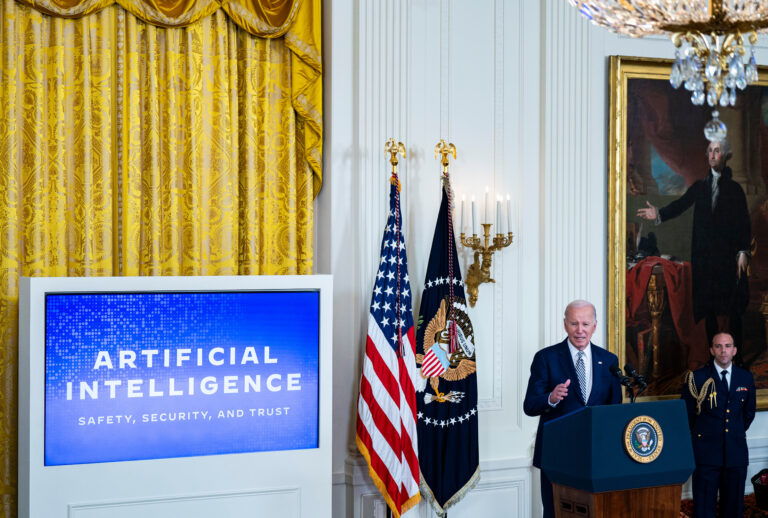On October 30, President Biden signed an executive order establishing a framework for the development of artificial intelligence (AI), underscoring the dual ambitions of leading AI innovation and addressing the challenges it might pose.
The executive order builds on the principles outlined in the Biden-Harris administration’s AI Bill of Rights blueprint introduced in October 2022. This measure has been in the works for some time – in September, Whiteboard Notes reported that, during the HolonIQ Back to School Summit, Kristina Ishmael, Deputy Director of the U.S. Department of Education’s Office of Education Technology, indicated that a White House executive order on AI was in development while also pointing out how complex and challenging federal policy development on the topic can be.
The executive order mandates the U.S. Department of Education to develop an “AI toolkit” to aid education leaders in applying recommendations for the use of artificial intelligence within classrooms, as proposed earlier this year. ED has initiated work on this toolkit and anticipates its release in the upcoming spring, according to reporting by Politico. Additionally, the order stipulates that the Department should, within the next year, formulate resources, policies, and guidance to ensure the safe, responsible, and nondiscriminatory deployment of AI in educational settings.
Following the announcement, the Office of Management and Budget (OMB) released draft guidelines for federal agencies to follow in implementing the White House’s AI executive order. The OMB’s guidance requires every agency to identify a Chief AI Officer, to take steps to increase AI talent within the government, and to improve transparency in AI use.
The guidance also defines several uses of AI to be potentially “rights-impacting”: in education these include detecting cheating, predicting student progress, and online monitoring, among others; in the workforce, it includes pre-employment screening, virtual or augmented reality workplace training programs, and time-on-task tracking. These guidelines aim to ensure responsible AI practices in the federal government. OMB is seeking public input by Dec. 5.
By The Numbers: A Center on Reinventing Public Education (CRPE) report shows states are cautiously approaching AI integration in schools, with most avoiding issuing guidance and leaving it to local districts. Only California and Oregon have set official AI guidelines, 11 states are working on their own, and 21 have no plans to do so. This hesitancy is echoed by an earlier report from SETDA and W/A noting only 2% of state ed-tech officials have state AI guidance initiatives.
What They’re Saying
- “State school leaders can’t shy away from change or the technologies that bring it about. That’s not an option for the students we serve whose future success depends on their ability to thrive in an ever-changing, technology-rich world,” said Kirsten Baesler, State Superintendent, North Dakota Department of Public Instruction, in a statement about the launch of TeachAI’s AI Guidance for Schools Toolkit.
- “The executive order is a commendable step by the administration, as the responsible use of AI in education is a critical policy imperative that shapes our learning future,” said Erin Mote, co-founder of InnovateEDU, which relaunched the EdSAFE AI Alliance this week. “The Alliance, anchored by the SAFE framework, is actively shaping and implementing policies across federal, state, and local levels to ensure AI serves as a force for good in education.”




